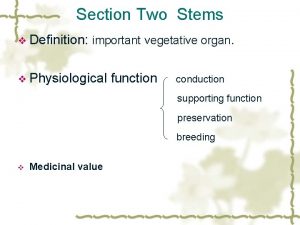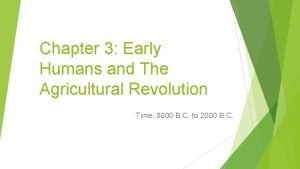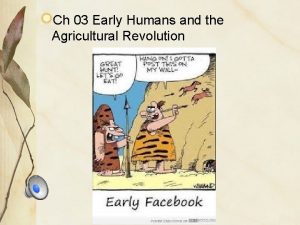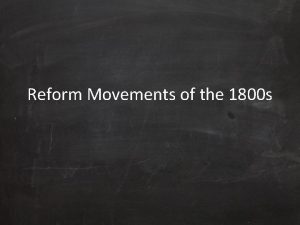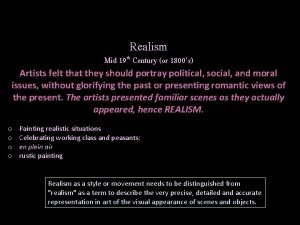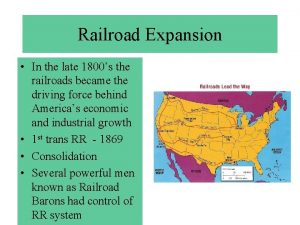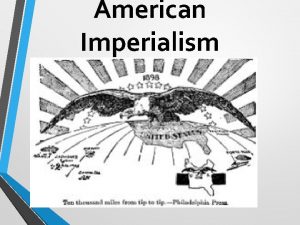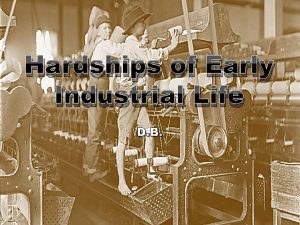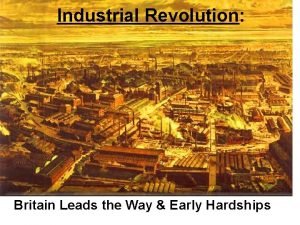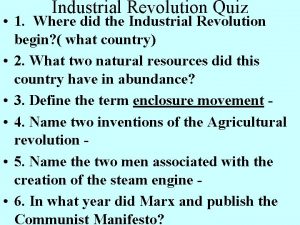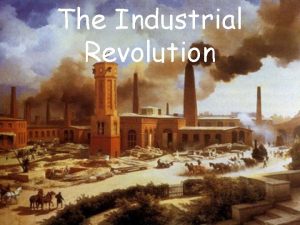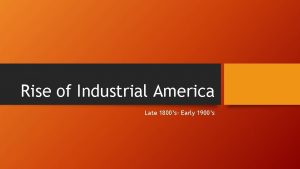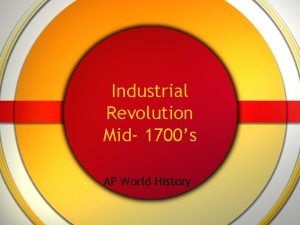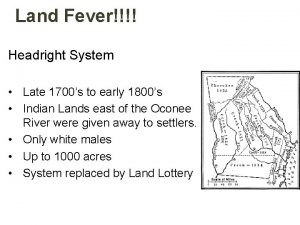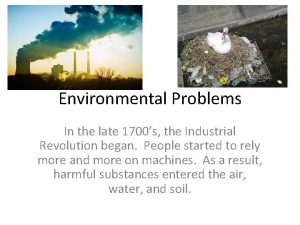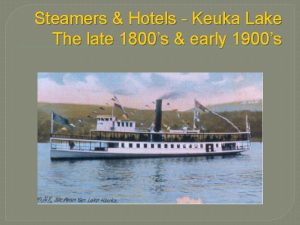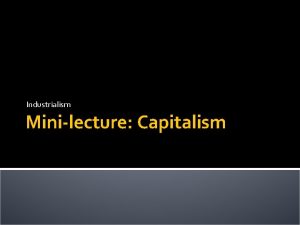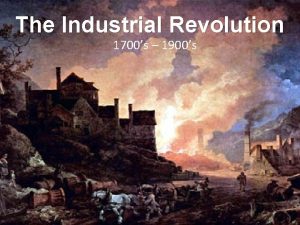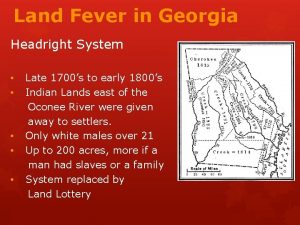The Industrial Revolution Late 1700s Early 1800s INDUSTRIAL






![Innovations in Textile Manufacturing ]Spinning jenny (1764), used a single wheel to control several Innovations in Textile Manufacturing ]Spinning jenny (1764), used a single wheel to control several](https://slidetodoc.com/presentation_image_h2/adff0860ba27a1e505eef5a3b76cb44b/image-7.jpg)
![Innovations in Textile Manufacturing ] *James Watt, a Scottish inventor, improved the steam-engine (1769) Innovations in Textile Manufacturing ] *James Watt, a Scottish inventor, improved the steam-engine (1769)](https://slidetodoc.com/presentation_image_h2/adff0860ba27a1e505eef5a3b76cb44b/image-8.jpg)



























- Slides: 35

The Industrial Revolution Late 1700’s- Early 1800’s

INDUSTRIAL REVOLUTION • What factors caused the Industrial Revolution? • How did the Industrial Revolution change the ways people lived?

The Industrial Revolution • Fundamental changes in the way goods were made and produced. – From cottage industry to factories – MASS PRODUCTION • Large scale production of identical goods – Steam power to run machinery

Why Industrialization begins in Great Britain Geographical Advantages Harbors, rivers & coal Transportation and Communications Coastal trade, canals, port towns, postal service, newspapers, navy

Why Industrialization begins in Britain Large Colonial Empire Raw materials • Powerful middle class • Capital, labor and new industrial inventions

Why Industrialization begins in Britain • Improvements in Agriculture • Scientific method use to improve production
![Innovations in Textile Manufacturing Spinning jenny 1764 used a single wheel to control several Innovations in Textile Manufacturing ]Spinning jenny (1764), used a single wheel to control several](https://slidetodoc.com/presentation_image_h2/adff0860ba27a1e505eef5a3b76cb44b/image-7.jpg)
Innovations in Textile Manufacturing ]Spinning jenny (1764), used a single wheel to control several spindles at a time.
![Innovations in Textile Manufacturing James Watt a Scottish inventor improved the steamengine 1769 Innovations in Textile Manufacturing ] *James Watt, a Scottish inventor, improved the steam-engine (1769)](https://slidetodoc.com/presentation_image_h2/adff0860ba27a1e505eef5a3b76cb44b/image-8.jpg)
Innovations in Textile Manufacturing ] *James Watt, a Scottish inventor, improved the steam-engine (1769) ]Allowed factories to be placed anywhere, no longer dependant on water

SHIFTING from home to factory

From HOME to Factory DOMESTIC SYSTEM Before the Industrial Revolution craftsmen working at home, spinning wool by hand

From Home to FACTORY • Factories, large number of workers could be supervised and use machines driven by water or steam power • England’s plentiful supplies of coal and water provided resources to run the factories

Working Conditions Appalling places to work, with unsafe and unpleasant conditions Work hours were long, and workers pay was low Children preformed dangerous tasks

Write a caption for this cartoon

URBANIZATION From the countryside farms (RURAL)

LARGE CITIES

URBANIZATION With the shift of work to factories, large number of workers moved from their farms and homes in the countryside to cities.

Urbanization • Cities became crowded and highly unsanitary • Factory smoke polluted the air • Local governments were often unable to cope with the needs of large numbers of workers

INDUSTRIALIZATION • CHANGES – Transportation – Family life – Reform movements – Communism

Transportation • Railroads & Steamboats – Used steam engines -unified economies by linking regions & connected Europe

Railroads connected Europe

Steamboats • Impact on the Midwest & Southeast of United States as goods could be more easily carried via rivers

Changes to European Society • New middle class of CAPITALISTS – From the middle class • Entrepreneurs – Owned the means of production – Managed businesses and factories

Changes in European Society • Working class – Left countryside for industrial areas, provided labor for wages

Role of the Government in early 19 th century Capitalism • Governments followed a LAISSEZ-FAIRE policy. – Did not interfere with business owners and workers.

Changes to family life • Shift from the family working as farmers or craftsman to families working in factories • Child labor • Less time spent with family • Families moved from villages into towns and cities • Crowded, small apartments • RISE IN CITY CRIME -Gangs

Family Life suffered • Less access to fresh water and sunlight • Spread of diseases like cholera and typhus

For most children industrialization meant – Factory Work, shift work & Child Labor

Social Reforms • In England, Parliament passed laws – Banning women and children from working in the mines – Limited work hours to 10 hours per day – For safer working conditions Queen Victoria and her husband Prince Albert worked to help the poor

Medical Improvements • LOUIS PASTEUR – Improved sanitary practices – Developed vaccines to combat anthrax and rabies – Heating of liquids to kill germs • PASTEURIZATION

Municipal Reforms Improvements to life in the cities

Municipal Improvements Improved water supply, sewage system and trash collection

Sewer systems

Municipal Reforms Public School Systems

Municipal Reforms Sir Robert Peel’s London “Bobbies” City police forces to reduce crime

LABOR REFORMS • Workers organized UNIONS to get – – – Better wages Improve working conditions Used STRIKES to achieve goals
 1700s
1700s Industrialists of the late 1800s used pools and trusts to
Industrialists of the late 1800s used pools and trusts to Policy catalyst first period 1780s to late 1800s
Policy catalyst first period 1780s to late 1800s Industrialists of the late 1800s used pools and trusts to
Industrialists of the late 1800s used pools and trusts to Tooth development
Tooth development Roots vegetative propagation
Roots vegetative propagation Complications of blood transfusion
Complications of blood transfusion Salvador late or early answer key
Salvador late or early answer key Welcome to our class
Welcome to our class Salvador late or early annotated
Salvador late or early annotated Java early binding
Java early binding What are virtual functions in c++
What are virtual functions in c++ Salvador late or early theme
Salvador late or early theme Blood transfusion complications
Blood transfusion complications Syphilis
Syphilis Early wood and late wood
Early wood and late wood Early vs late wood
Early vs late wood Early cpr and early defibrillation can: *
Early cpr and early defibrillation can: * Early humans and the agricultural revolution
Early humans and the agricultural revolution Early humans and the agricultural revolution answer key
Early humans and the agricultural revolution answer key Economic causes of french revolution
Economic causes of french revolution Definition of third agricultural revolution
Definition of third agricultural revolution Russian revolution vs french revolution
Russian revolution vs french revolution 1900s girls fashion
1900s girls fashion At the end of the 1800s, colonies were generally seen as a
At the end of the 1800s, colonies were generally seen as a In the 1800s, charles lyell emphasized that
In the 1800s, charles lyell emphasized that Reform movements 1800s
Reform movements 1800s Labor force in the north 1800s
Labor force in the north 1800s Realism paintings 1800s
Realism paintings 1800s Railroad expansion 1800s
Railroad expansion 1800s Sicknesses in the 1800s
Sicknesses in the 1800s American imperialism 1800s
American imperialism 1800s Hardships of early industrial life
Hardships of early industrial life Hardships of early industrial life
Hardships of early industrial life 4th industrial revolution
4th industrial revolution Quiz 1: development of industrial revolution
Quiz 1: development of industrial revolution





